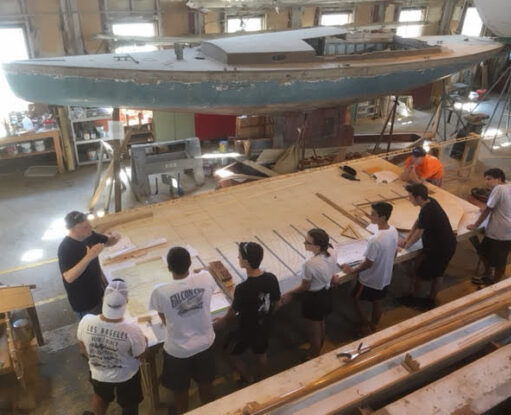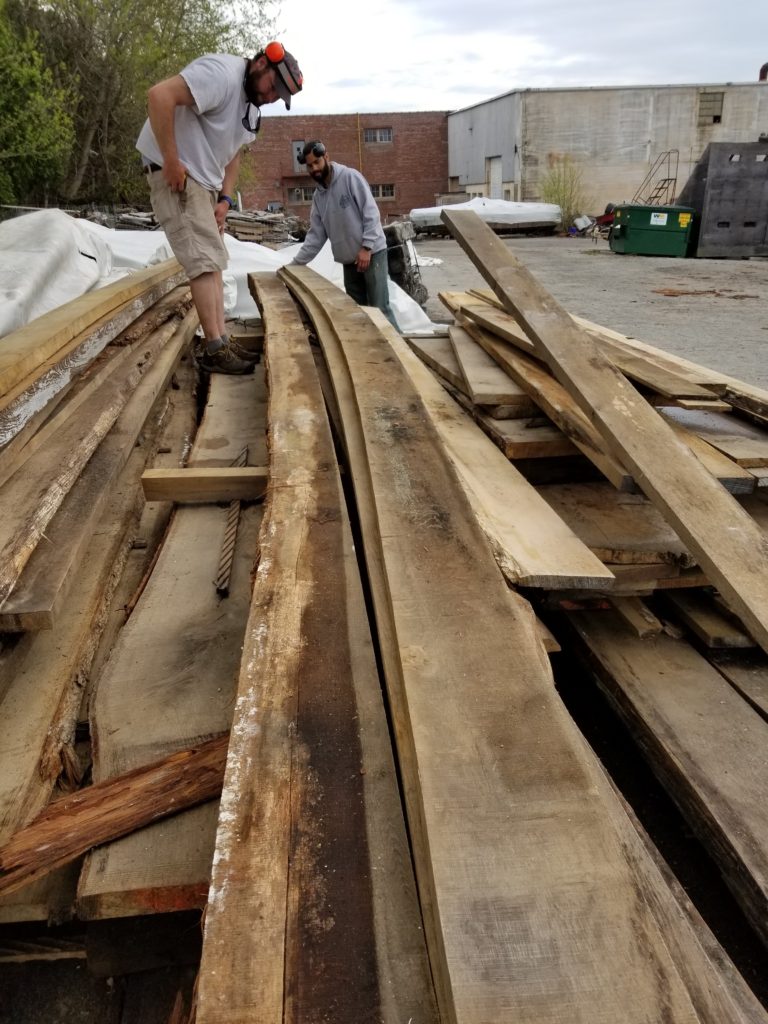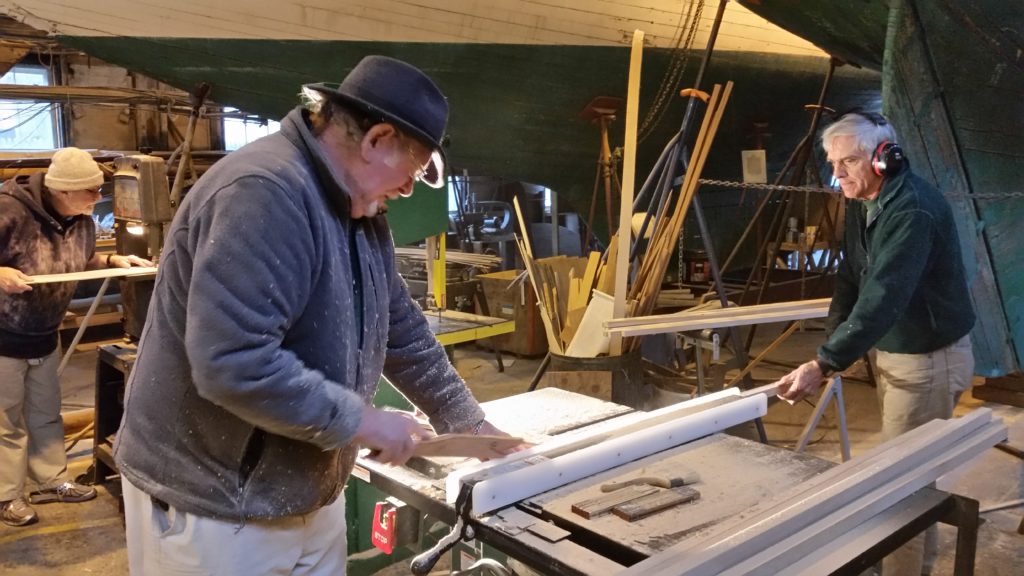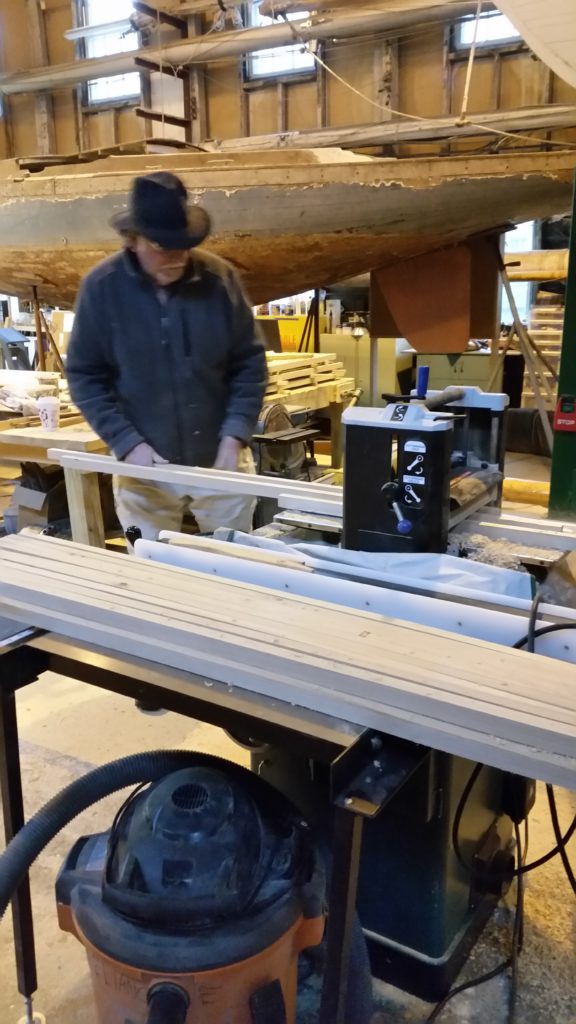Before starting, I'd like to note "Herreshoff's Rules for Lightweight Wooden Boat Building" found in Norman Skenes' "Elements of Yacht Design." Our plans had a number of measurements and comments about selected wood. All conformed to his rules, of course, but where information was lacking, we went to the Rule book! The plans and Rules never failed us! For those who have naval architecture or other boat building experience or who are just plain know-it-alls, I have only three pieces of hard-earned advice:
- Do not re-engineer or improve upon his process, rules, or plans. You are not as good as Capt. Nat.
- If the drawing doesn't look right, if the process doesn't seem logical, it is. You just don't yet understand.
- Just follow his rules; you'll understand he was correct when you are finished.
And for those who are trying to be faithful to the era in which the boat was built, I add another suggestion. Put yourself in that era. Don't tell me you can use modern techniques or fasteners, or this is how you can do this today. And they were better craftsmen than today, by-in-large. They worked in a high-volume shop where their craftmanship enabled high-quality throughput- but as seen in unrestored originals they weren't inane about it!
As you follow along with our construction I hope you'll see, as we did, the incredible light-weight construction techniques. L. Francis Herreshoff commented in his book about his father that he perfected light-weight boat construction in these davit launches. We certainly saw that, and saw as we worked on the launch alongside restoration of Wee Winn that this approach was quickly transferred to sailboat construction in 1892-3 when HMCo's sailboat sales took off!
Think about it, despite 1890's materials and ultra-light weight, his boats have survived a century of use!
Education is always a priority whether high school and college interns, visitors from Dan Shea's class of high-school neophyte boat builders (picture 1), or Museum visitors to the shop wanting to share and swap their experience and expertise.
At this point in the project we were off to find timber from local lumber suppliers, Newport Nautical Timber, St. Angelo's, and our own shop supplies. Mystic Seaport even donated several small cast-offs of thickness we couldn't find elsewhere. Often we'd look for pieces which had curves matching our needs such as the sheer plank - picture 2. Picture 3 shows planks for keel and false keel and shorter ones for ribs. We were terribly constrained by budget and thought that since this boat wouldn't float we'd search through piles of lower quality. NEVER AGAIN! What you gain in price you lose in waste and wood that fights you and your tools at every turn. Quality wood and sharp tools = a happy boat builder!
In picture 4 Bill and Keith are ripping ribs while in the background Eric is cutting out a piece of a mold, hoping to complete them before we're ready to steam bend Bill and Keith's ribs in place.
Some shop humor. I asked one of our new volunteers to sticker a stack of ribs, and came back at end of day to find the stack sorted by length with red, blue, yellow and green Dennison sticky disks on each one!






